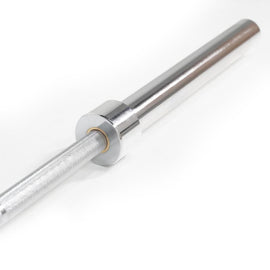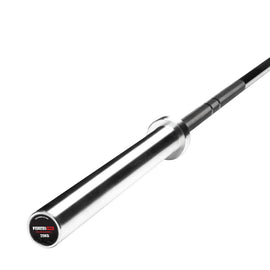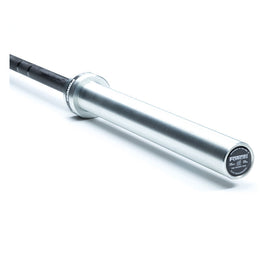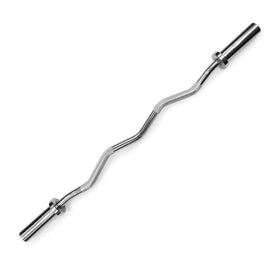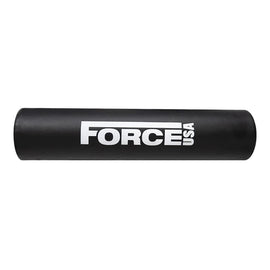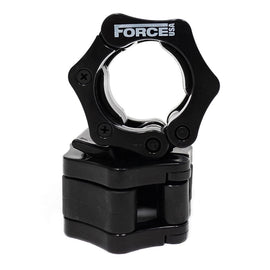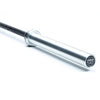
Barbells
Force USA offers different levels of weight training barbells for the novice and serious powerlifter alike. Choose from our Olympic and Allrounder barbells below!
Filter by
Barbells are one of the most popular pieces of equipment in a home gym. They come in various types, including Olympic and standard weight bars, and are used for a variety of exercises such as squats, deadlifts, and bench presses.
What is a Barbell?
A barbell consists of a long metal shaft with collars on each end to hold weight plates. The sleeve, which rotates around the shaft, is where the weight plates are loaded. The shaft is typically made of steel, and the collars and sleeves are made of a harder metal to prevent damage. The most common materials used to manufacture barbells are stainless steel, chrome, and black oxide.
How to Choose the Best Barbell
When selecting a barbell, there are several factors to consider, including whip, knurling, and tensile strength. Whip refers to the amount of bend in the bar when weight is added. Knurling is the rough surface on the shaft that provides grip. Tensile strength refers to the amount of weight the bar can hold without bending or breaking. It is important to choose a barbell with the appropriate level of each of these factors for your specific needs.
Whip
Whip is an important factor to consider when selecting a barbell, as it affects the amount of energy stored in the bar and the ease of lifting. There are different levels of whip available, including stiff, moderate, and flexible. Stiff bars have very little whip and are best for powerlifting, while flexible bars have the most whip and are best for Olympic lifting. It is important to choose a barbell with the appropriate level of whip for your specific needs.
Knurling
Knurling is another important factor to consider when selecting a barbell, as it affects the grip and comfort of the lifter. There are different types of knurling, including aggressive, moderate, and passive. Aggressive knurling provides the most grip but can be uncomfortable, while passive knurling provides the least grip but is the most comfortable. It is important to choose a barbell with the appropriate level of knurling for your specific needs.
Tensile Strength
Tensile strength is a critical factor to consider when selecting a barbell, as it affects the weight capacity and durability of the bar. There are different levels of tensile strength available, including 150,000 PSI, 190,000 PSI, and 210,000 PSI. It is important to choose a barbell with the appropriate level of tensile strength for your specific needs.
Loadable Sleeve Diameter
Loadable sleeve diameter is another important factor to consider when selecting a barbell, as it affects the amount of weight that can be added to the bar. The most common loadable sleeve diameters are 1 inch and 2 inches. Olympic barbells typically have 2-inch sleeves, while standard weight bars typically have 1-inch sleeves. It is important to choose a barbell with the appropriate loadable sleeve diameter for your specific needs.
Allrounder
An allrounder barbell is a popular choice for fitness enthusiasts as it is versatile and can be used for a variety of exercises. Allrounder barbells typically have moderate whip, moderate knurling, and tensile strength of around 190,000 PSI. It is important to choose an allrounder barbell with the appropriate loadable sleeve diameter for your specific needs.
How Much Does a Weight Bar Weigh?
Weight bars come in different weight options, including standard and Olympic weight bars. Standard weight bars typically weigh around 20 pounds, while Olympic weight bars weigh around 45 pounds. It is important to choose the appropriate weight option based on your strength level and the exercises you will be performing.
How Long is an Olympic Barbell?
The standard length of an Olympic barbell is 7 feet, and the standard diameter is 2 inches. Olympic barbells are commonly used for weightlifting exercises and can hold more weight than standard weight bars.
The Bottom Line
Selecting the right barbell for your specific needs is critical for achieving your fitness goals. It is important to consider factors such as whip, knurling, tensile strength, and loadable sleeve diameter when selecting a barbell. Additionally, purchasing your barbell from a reputable manufacturer can ensure its quality and durability.



